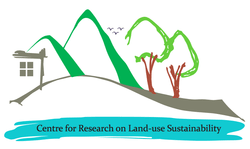Soil carbon and nitrogen distribution under contrasting land cover types in Kibale National Park, Uganda
|
Giregon Olupot 1*, Antonia Nyamukuru 2, Doreen Muhumuza 1, Enock Ssekuubwa 3, Kellen Aganyira 4, Vincent B. Muwanika 2, Josephine Esaete 5 and John RS Tabuti 2
1Department of Agricultural Production, School of Agricultural Sciences, Makerere University, Kampala, Uganda 2Department of Environmental Management, School of Forestry, Environmental & Geographical Sciences Sciences, Makerere University, Kampala, Uganda 3Department of Forestry, Biodiversity and Tourism, School of Forestry, Environmental and Geographical Sciences, Makerere University Kampala, Uganda 4Department of Adult and Community Education, School of Distance and Lifelong Learning, Makerere University, Kampala, Uganda 5Department of Science, Technical and Vocational Education, College of Education and External Studies, Makerere University, Kampala, Uganda. *Corresponding author: [email protected], [email protected] |
|
ABSTRACT: Avoided deforestation in Africa’s tropical forests between 2003 and 2012 saved about 615.8 million Mg CO2 from being emitted into the atmosphere. However, little is known about how land cover type (LCT) and land cover change (LCC) influence the sequestration of carbon (C) and nitrogen (N) in soils under these forests. We evaluated the impact of LCT on the distribution of soil C and N stocks and changes in these stocks with LCC in Kibale National Park, Uganda. Soil core samples were extracted manually down to 0.6 m at 0.15 m intervals under - intact forest, restored forest, degraded forest and annual cropping (maize) on a red Ferralsol soil. There was a significant effect of LCT/LCC on the depth distribution of soil C and N stocks in the area. Highest soil C stocks (19.0±0.86 Mg ha-1) were observed under maize whereas the smallest (16.4±1.54 Mg C ha-1) were under intact forest. However, about 70% of the soil C stocks under the forest covers (11.2 Mg C ha-1) were accumulated deeper than 0–0.15 m compared with only about 47% (about 8.9 Mg C ha-1) under maize. The 2.3 Mg C ha-1 in the 0.15–0.6 m layer of soil under intact and restored forest covers in excess of what we observed under maize, highlights the importance of forest covers in sequestering C and N in the area and potentially in related ecosystems elsewhere in Uganda.
Key words: land cover, degraded forest, tropical high forest, restored forest, soil C, soil N Subject areas: Africa, Uganda, Soil carbon, Climate change Recommended citation: Olupot, G., Nyamukuru, A., Muhumuza, D., Ssekuubwa, E., Aganyira, K., Muwanika, V.B., Esaet, J., Tabuti, J.R.S., 2015. Soil carbon and nitrogen distribution under contrasting land cover types in Kibale National Park, Uganda . International Journal of Research on Land-use Sustainability 2: 101-112. DOI: 10.13140/RG.2.1. 1762.0885. |
Received:
February 12, 2016 Accepted: March 7, 2016 Communicated by: Dr. Mohammad Alamgir James Cook University Australia Download: |


